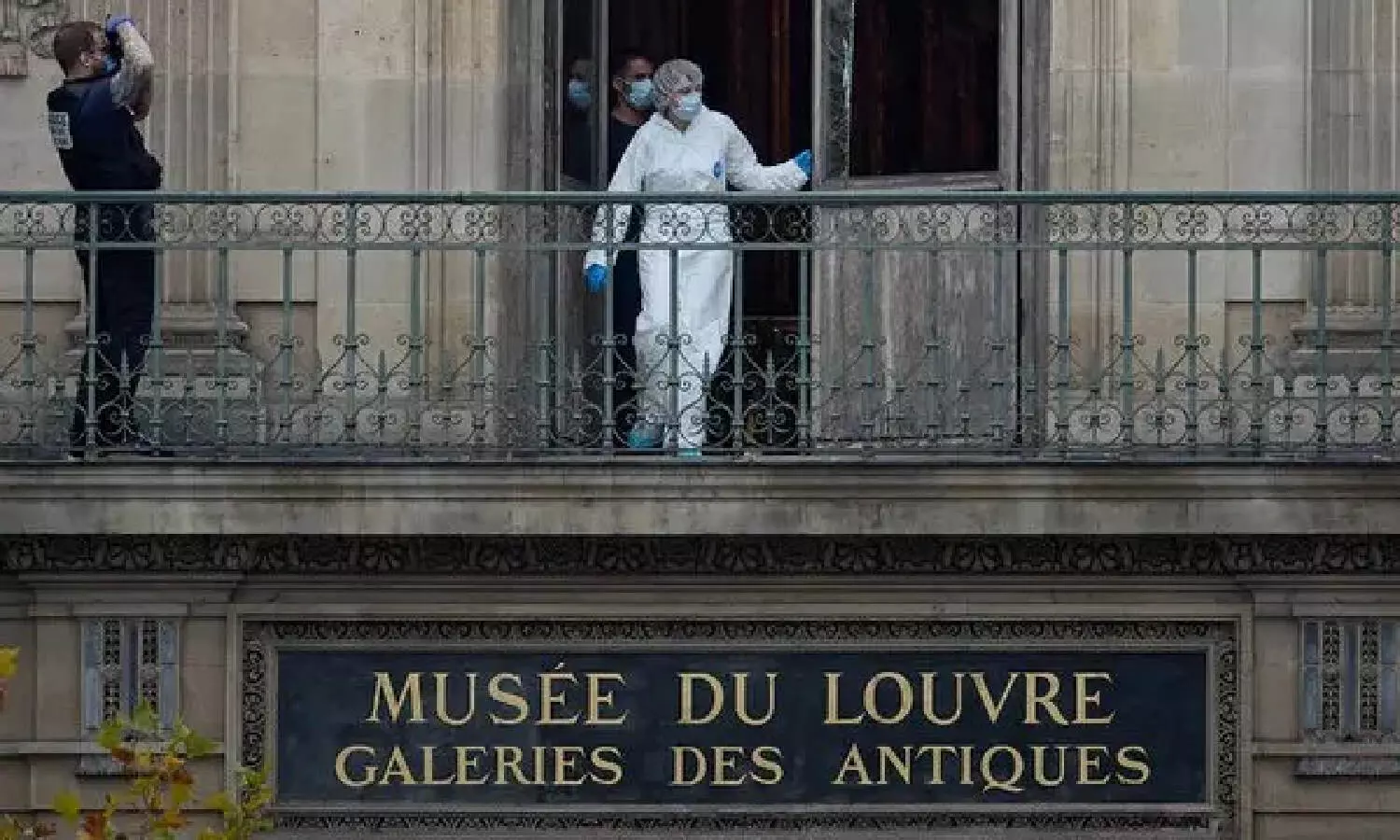Do You Know: How the Louvre heist was pulled off?
Thieves made off with priceless Napoleonic jewels after pulling off a precisely timed and professionally executed raid inside one of the most heavily guarded institutions in the world.
By Newsmeter Network
Do You Know: How the Louvre heist was pulled off?
Hyderabad: In a scene that seemed straight out of a film, the world’s most-visited museum, the Louvre in Paris, witnessed a spectacular daylight heist on Sunday.
Thieves made off with priceless Napoleonic jewels after pulling off a precisely timed and professionally executed raid inside one of the most heavily guarded institutions in the world.
So, how exactly did the robbery unfold inside the historic palace that houses the Mona Lisa and centuries of French heritage? Here’s a detailed look at how the heist at the Louvre was carried out.
The Break-In: Precision and planning
At around 9:30 am, just half an hour after visitors began entering through the museum’s main entrance, four balaclava-clad thieves arrived at the south side of the Louvre, along the Seine River. Using a vehicle-mounted extendable ladder, they climbed to a second-floor balcony window that led directly into the Apollo Gallery, which houses France’s collection of crown jewels.
Two of the thieves cut through the window using an angle grinder and power tools, while the others remained outside to watch for guards and witnesses. Once inside, they smashed open glass display cases containing the jewels.
What they stole and what they dropped
Officials confirmed that eight valuable pieces were stolen, including:
• A necklace and earrings gifted by Napoleon I to his second wife, Empress Marie-Louise.
• A diadem, brooch, and decorative bow belonging to Empress Eugénie, wife of Napoleon III, with nearly 2,000 diamonds.
• A tiara, necklace, and single earring from a sapphire set worn by Marie-Amelie, the last Queen of France. The necklace features eight sapphires and 631 diamonds.
During their escape, the thieves dropped Empress Eugénie’s crown, one of the museum’s most prized pieces, encrusted with 1,354 diamonds and 56 emeralds. They also missed the Regent Diamond, valued at over US$60 million, which remained untouched.
The Escape: Seven minutes of execution
The museum’s alarms went off as soon as the cases were broken, prompting guards to respond. But within seven minutes, the thieves had already fled on motorbikes, leaving behind tools and equipment. They attempted to set their vehicle on fire to destroy evidence, but were stopped by a quick-thinking museum staff member.
The Louvre was immediately evacuated and closed, with police sealing off the area for investigation.
Who are the suspects?
Authorities suspect the involvement of an organised crime network.
A 60-member police team is investigating the case, and Interior Minister Laurent Nunez described the suspects as a highly experienced group, capable of carrying out a fast, coordinated operation.
Renewed questions on museum security
The incident has reignited debate over security in French museums, many of which are less protected than banks despite holding treasures of immense cultural and monetary value.
Justice Minister Gérald Darmanin admitted to significant lapses, saying, “What is certain is that we have failed, since people were able to park a furniture hoist in the middle of Paris, get people up it in several minutes to grab priceless jewels, giving France a terrible image.”
Nunez acknowledged that museums remain a ‘major weak spot’ in national security. He confirmed that while the Louvre’s safety systems had been upgraded in recent years, they would now undergo a multimillion-euro security overhaul.
Recent incidents have raised similar alarms, including a $700,000 gold theft from the Natural History Museum in Paris and a $7.6 million artefact robbery from a museum in Limoges.
Not the first time the Louvre has been targeted
The Louvre’s history includes several infamous thefts.
- In 1911, Vincenzo Peruggia, an Italian decorator, stole the Mona Lisa by disguising himself as a museum worker. The painting was later recovered.
- In 1956, a visitor threw a stone at the Mona Lisa, damaging the paint and prompting its placement behind protective glass.
- The last theft before this week’s incident occurred in 1998, when a painting by Camille Corot was stolen and never found.
A heist that shook the world’s most famous museum
The Louvre remains closed as investigators analyse security footage and forensic evidence from the scene. The seven-minute robbery has exposed vulnerabilities even in the most prestigious cultural institutions, reminding the world that no treasure, however well-guarded, is completely beyond reach.